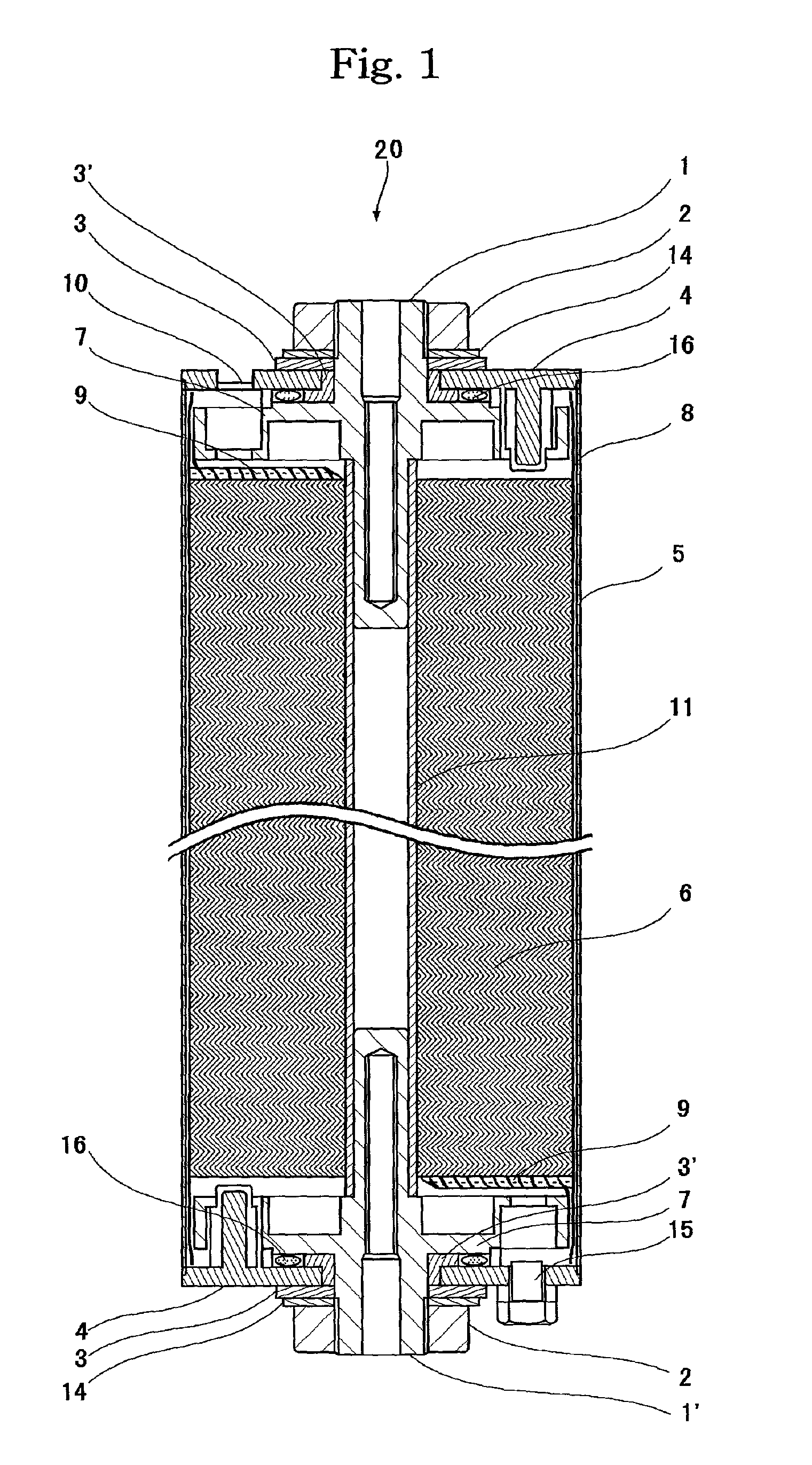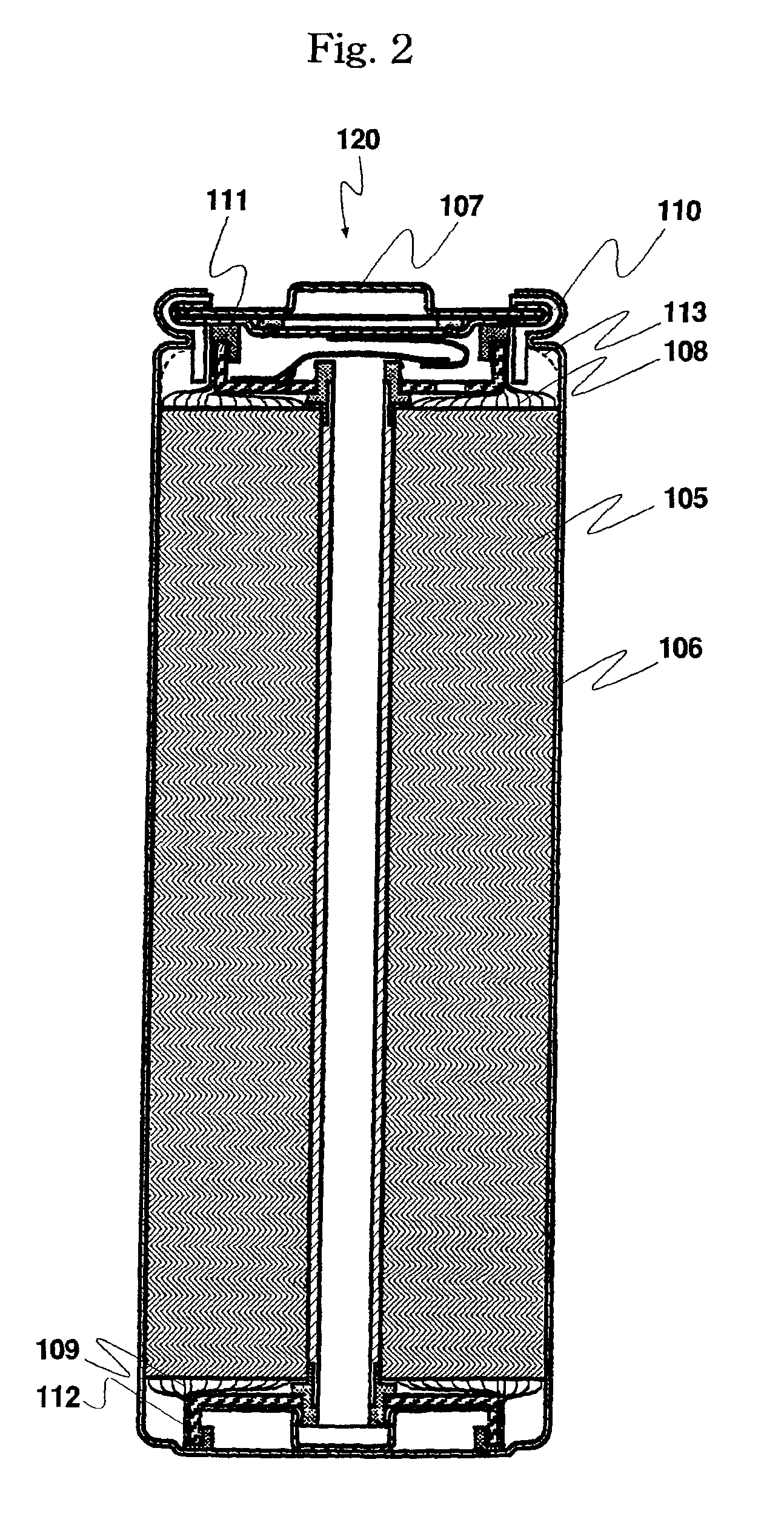Non-aqueous electrolytic solution secondary battery
a secondary battery, non-aqueous electrolytic technology, applied in secondary cell servicing/maintenance, cell components, sustainable manufacturing/processing, etc., can solve the problems of deterioration of power and cycle life characteristics, short charging/discharging cycle life characteristic of lithium-ion secondary battery,
- Summary
- Abstract
- Description
- Claims
- Application Information
AI Technical Summary
Problems solved by technology
Method used
Image
Examples
examples a-1
, A-2, Control A-1
[0028] As shown in the following Table 1, in Example A-1, Example A-2 and Control A-1, the positive porosity was set to 30%, and the negative porosity was set to 30%. The separator porosity was set to 40% in Example A-1, 30% in Example A-2, and 25% in Control A-1, respectively.
1 TABLE 1 POSITIVE NEGATIVE SEPARATOR POROSITY POROSITY POROSITY (%) (%) (%) Example A-1 30 30 40 Example A-2 30 30 30 Control A-1 30 30 25 Example A-3 40 40 60 Example A-4 40 40 50 Example A-5 40 40 40 Control A-2 40 40 30 Example A-6 20 20 30 Example A-7 20 20 20 Control A-3 20 20 15 Example A-8 50 50 60 Example A-9 50 50 50 Control A-4 50 50 40
examples a-3
to A-5, Control A-2
[0029] As shown in Table 1, in Example A-3 to Example A-5 and Control A-2, the positive porosity was set to 40%, and the negative porosity was set to 40%. The separator porosity was set to 60% in Example A-3, 50% in Example A-4, 40% in Example A-5, and 30% in Control A-2, respectively.
examples a-6
, A-7, Control A-3
[0030] As shown in Table 1, in Example A-6, Example A-7 and Control A-3, the positive porosity was set to 20%, and the negative porosity was set to 20%. The separator porosity was set to 30% in Example A-6, 20% in Example A-7, and 15% in Control A-3, respectively.
PUM
| Property | Measurement | Unit |
|---|---|---|
| porosity | aaaaa | aaaaa |
| porosity | aaaaa | aaaaa |
| porosity | aaaaa | aaaaa |
Abstract
Description
Claims
Application Information
 Login to View More
Login to View More - R&D
- Intellectual Property
- Life Sciences
- Materials
- Tech Scout
- Unparalleled Data Quality
- Higher Quality Content
- 60% Fewer Hallucinations
Browse by: Latest US Patents, China's latest patents, Technical Efficacy Thesaurus, Application Domain, Technology Topic, Popular Technical Reports.
© 2025 PatSnap. All rights reserved.Legal|Privacy policy|Modern Slavery Act Transparency Statement|Sitemap|About US| Contact US: help@patsnap.com


